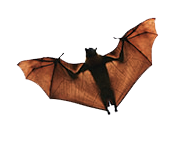All About the Cape Tribulation Tropical Research Station (continued)
More recent research projects:
Parasites in Cane Toads
We have discovered that the cane toads in this area are seriously infected with a variety of parasites – which is probably why we rarely see ones the size of the big ones from the 1970s.
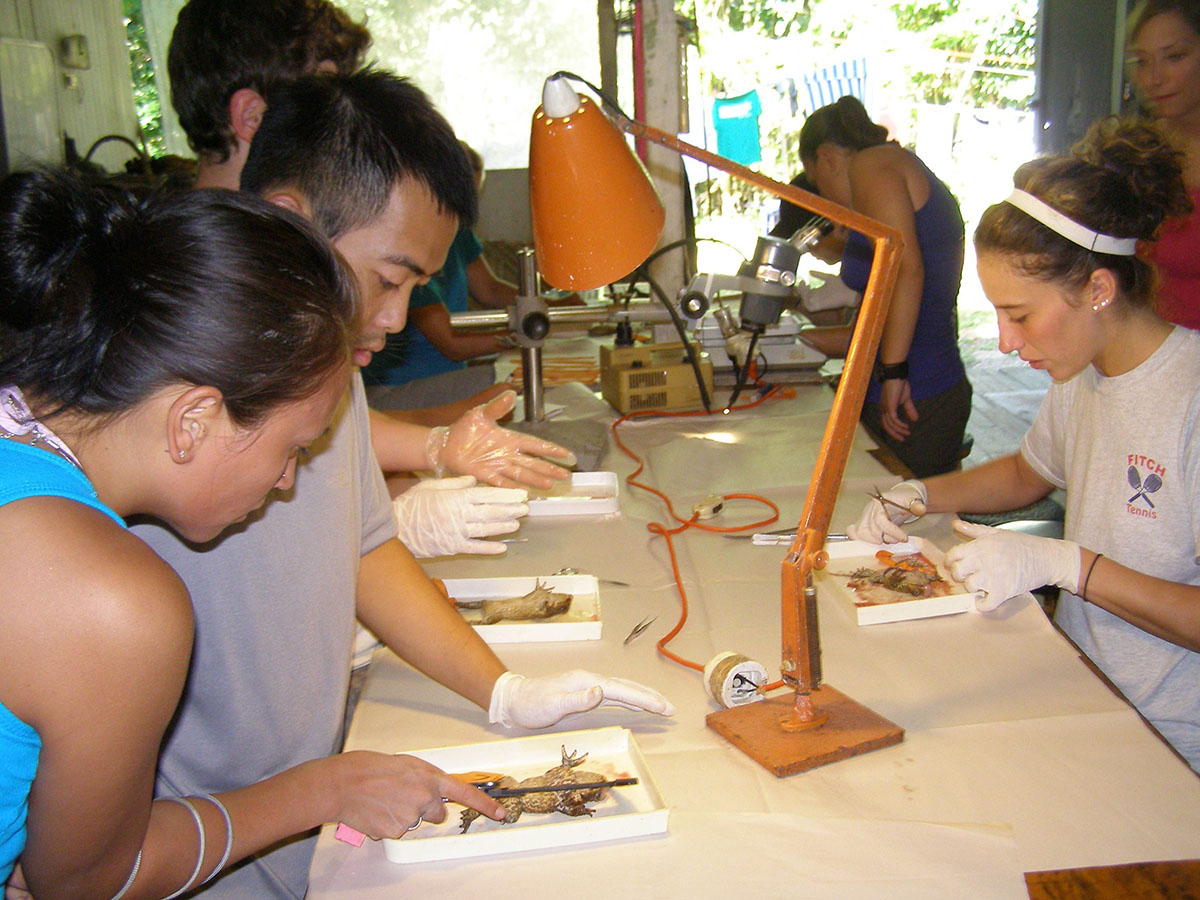
Student group gets the job of dissecting cane toads |
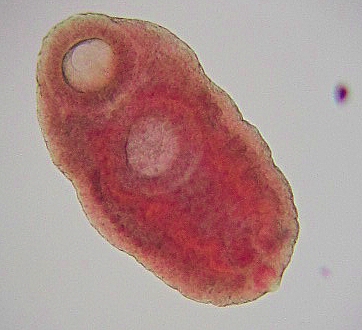
A flatworm parasite of cane toads |
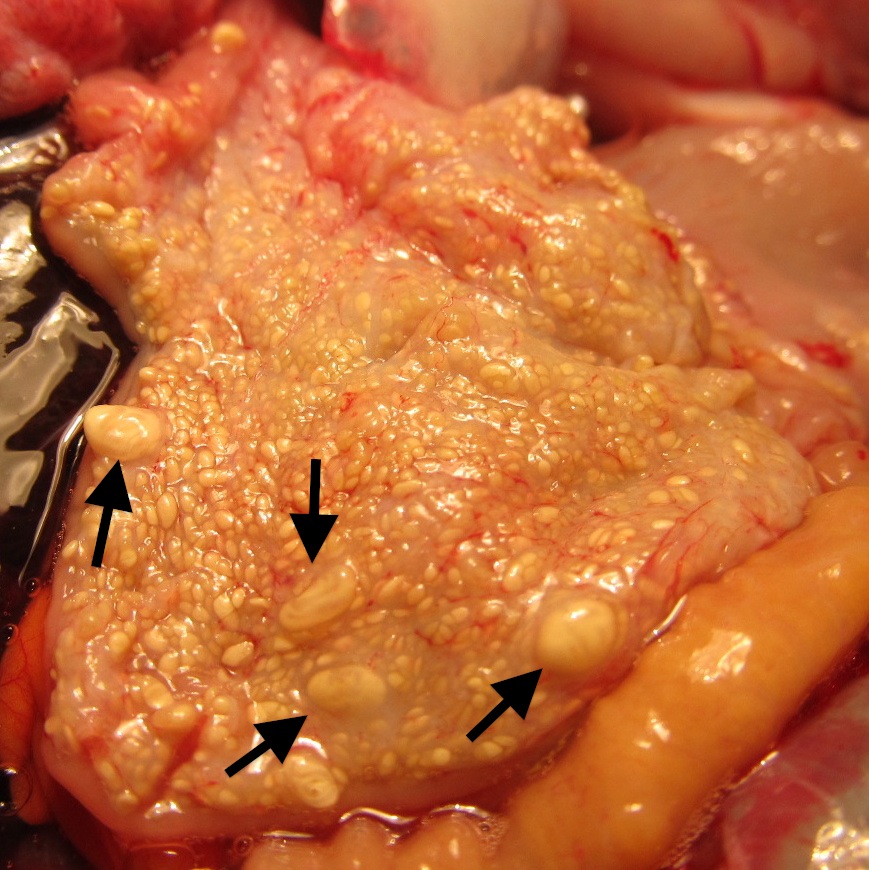
Parasites in the stomach lining of a cane toad |
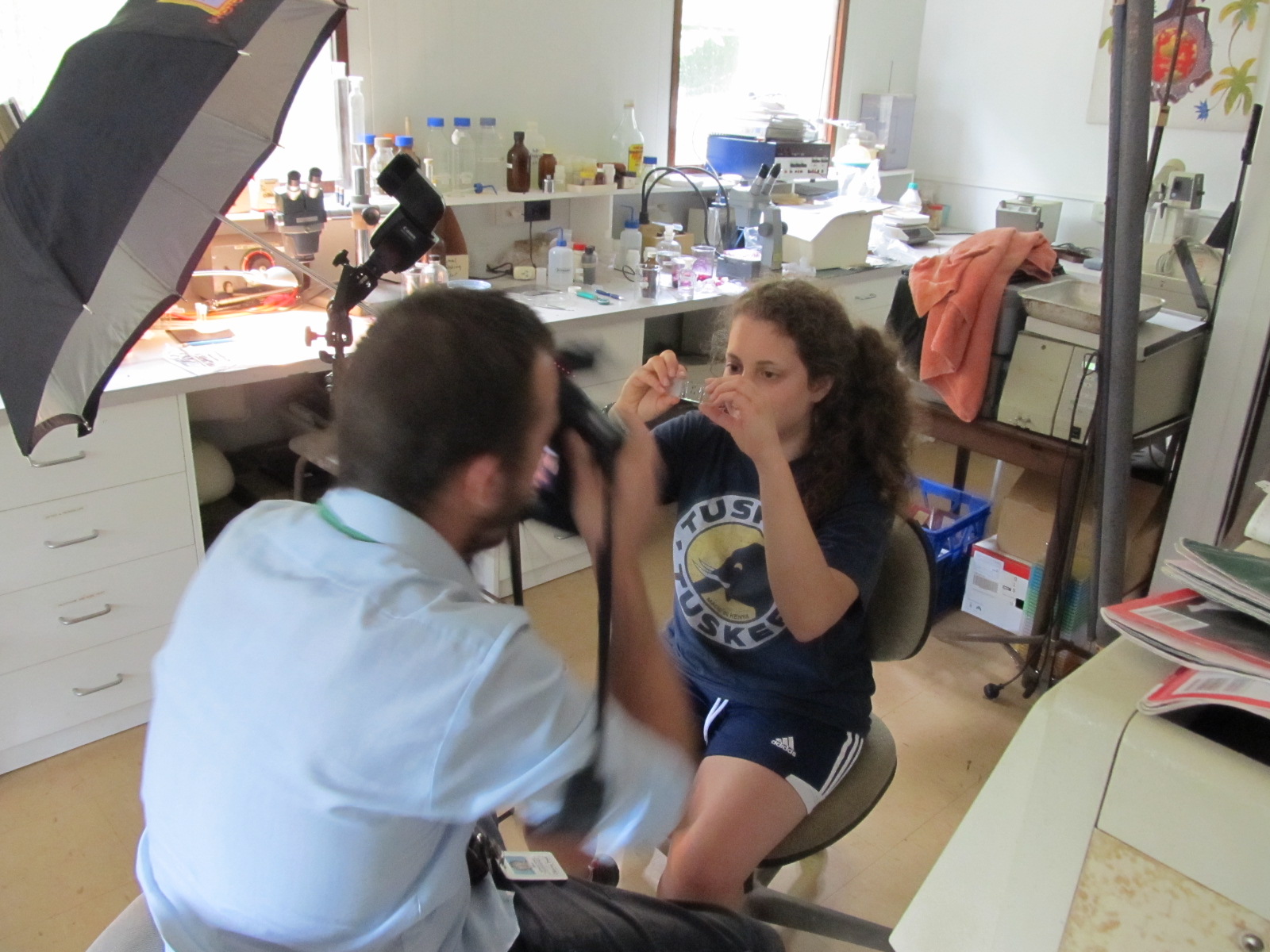
Hannah, an intern from America (who did the hard work) gets the publicity treatment for her work! |
Coconuts - the bane of the station’s existence (and the Council’s as well, and yes, we have planted coconuts on the station property - to eat)
The reality: coconut palms, no matter how iconic and quintessentially tropical, are NOT native to Australia. In fact there is a lot of discussion as to where they originated (probably somewhere in the Indian Ocean). Like bananas and breadfruit, they have been selected and cultivated for probably well over 1000 years, some to make fibre, some for food. Here at Cape Tribulation, we have in excess of 15 identifiable cultivars, most of which were planted in the 1970s and 1980s. Some varieties are pretty benign, some are not – especially those we call “high fecundity” (which means almost every fallen nut sprouts, eventually creating a wall of coconuts. You can see this at Big Cowie beach north of Cape Tribulation. There’s no room for natives – the growing nuts can outcompete everything. Sadly, coconuts don’t hold the beach together at all – the native littoral forest does that very well. Plus, the fallen fronds are very heavy and crush and shade-out native plants on the ground. Unfortunately, decades of deliberate and accidental misrepresentation in film, television, print media, and tourism industry advertising has managed to equate “tropics” with "coconuts" in the public mind. Why are we not promoting Calophylum (one our most beautiful beach trees) or other native plants?
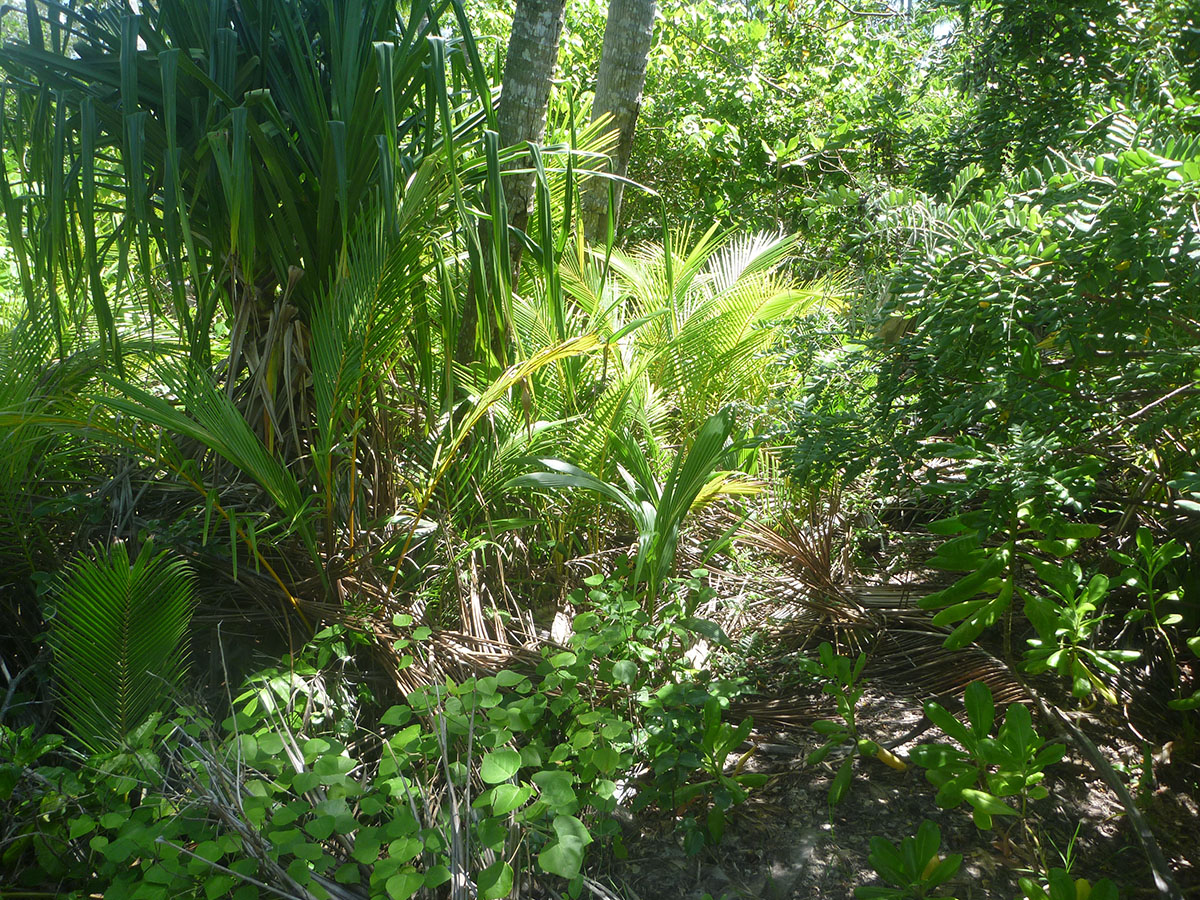
|

|
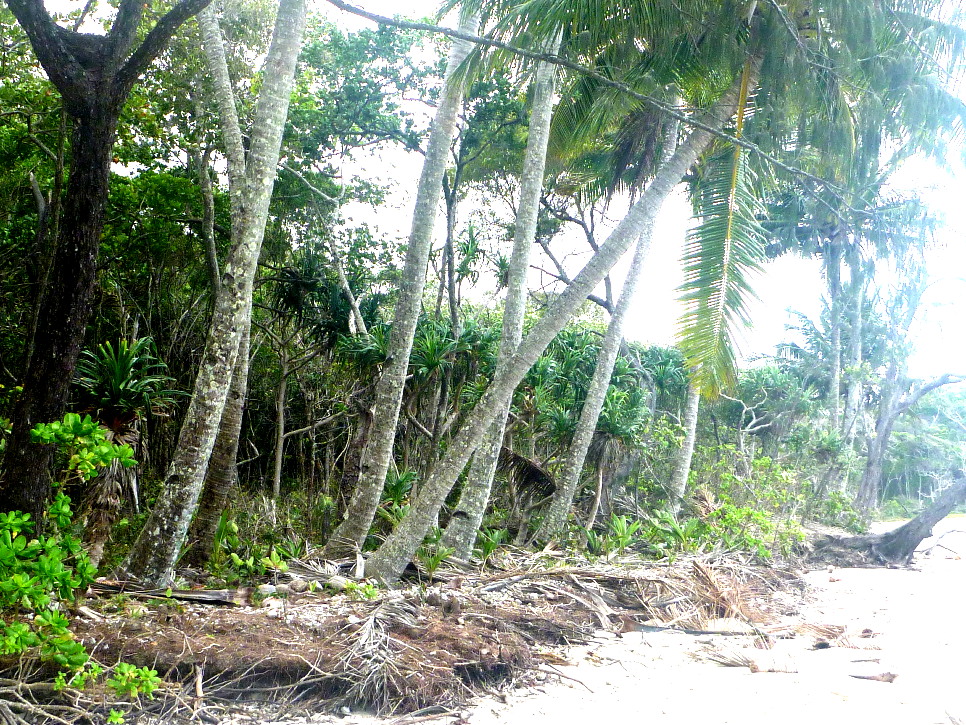
Adult coconuts – which have pushed back the natural littoral forest. |
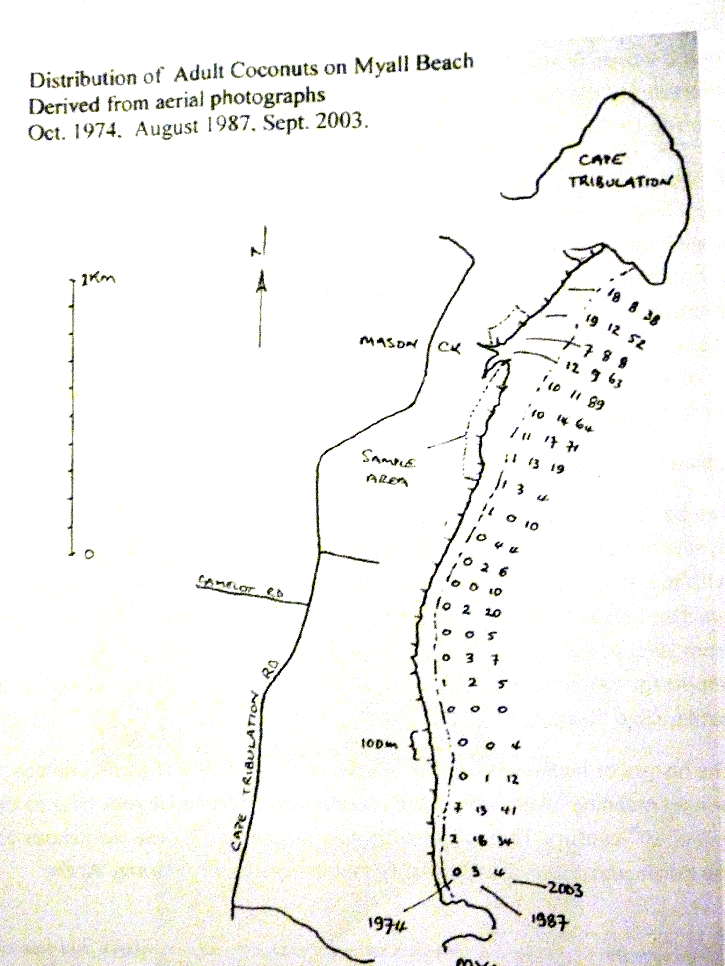
The map – which was derived from detailed examination of aerial photographs from 1974, 1987 and 2003 clearly show the spread of coconuts on Myall beach. The first coconut was planted at Cape Tribulation in 1934. |
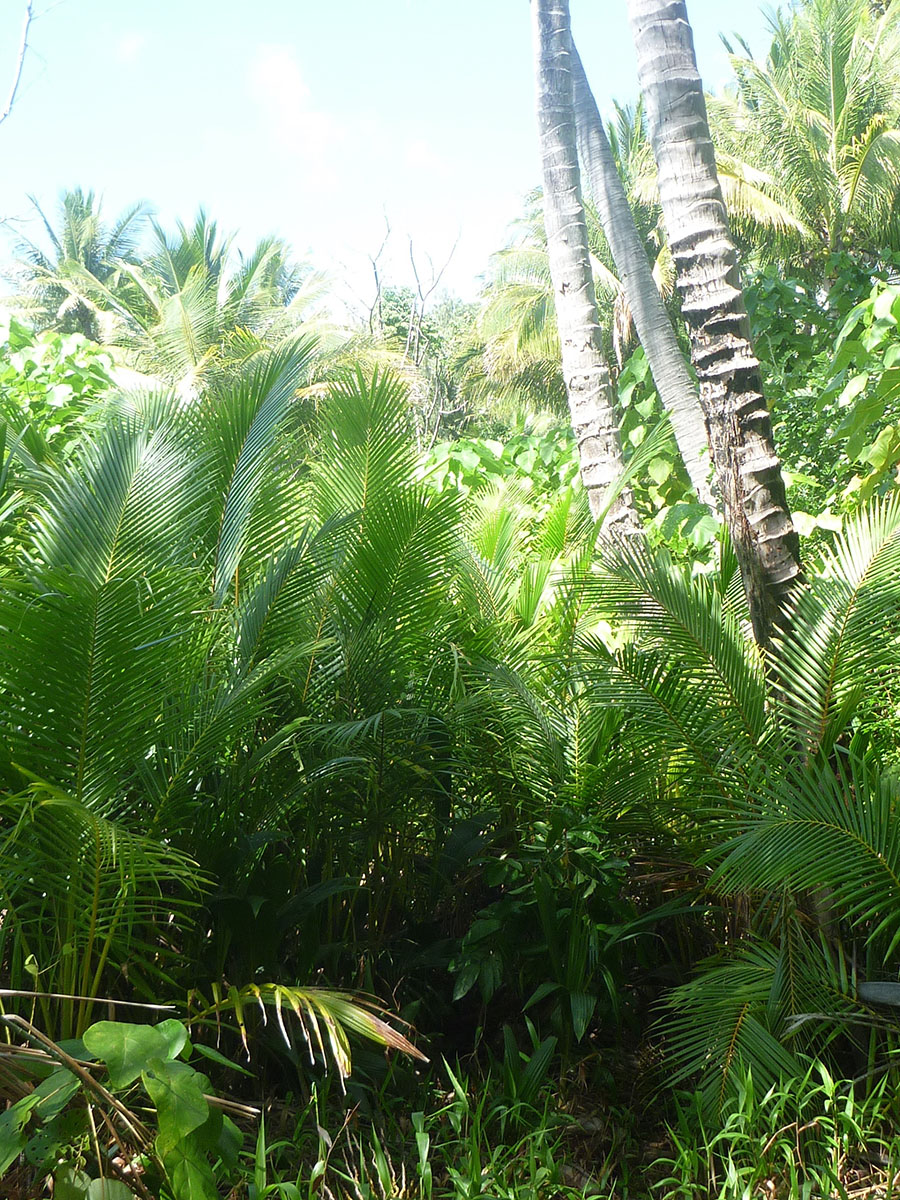
|
Cowie Beach – this remote uninhabited beach ought to look like Cape Tribulation beach - but it doesn’t. Why?? Because a beachcomber in the 1940s or 1950s built a shack (where the sand flat is) and planted lots of coconuts. Unfortunately, the variety he chose to plant was high fecundity and the coconuts spread very quickly as a result of nuts floating around the corner and washing up on Big Cowie beach. Now, well over 60% of Big Cowie (to the north) is completely infested with coconuts |

